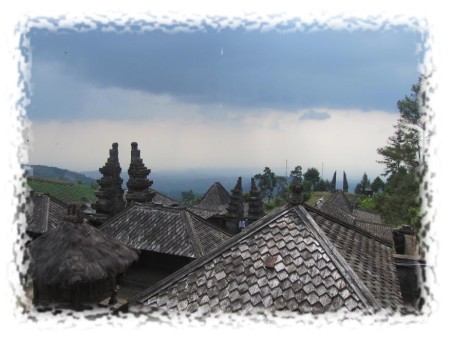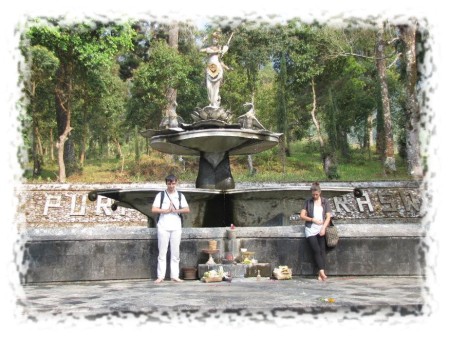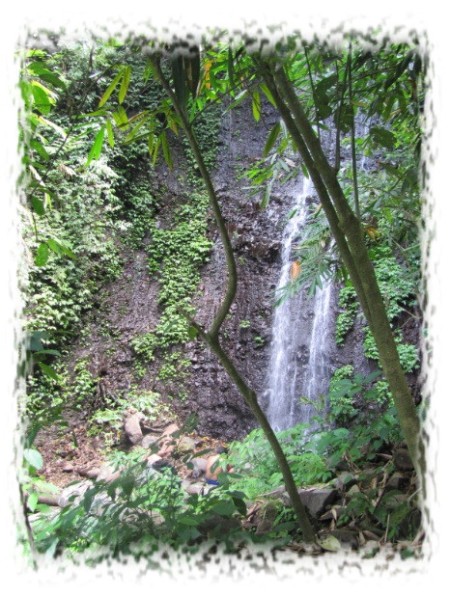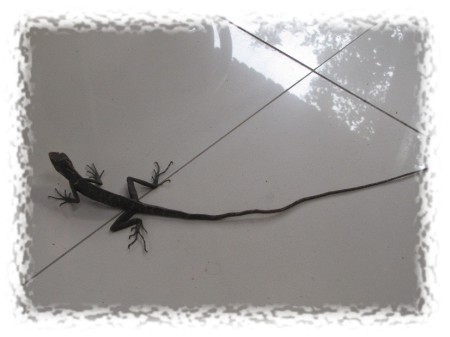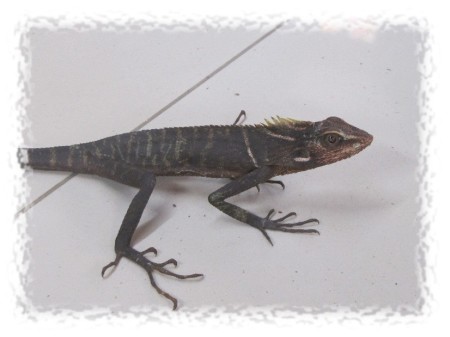Travel to learn about new places.
Of course, you can do it by reading a lot of books and travel magazines with beautiful pictures in them. But reading about these places while sitting in a comfortable chair at home and actually experiencing them, surviving in them, adapting to them, and finally enjoying them is definitely not the same. You learn much… much more when you go out of your cosy comfort zone and jump right into the foreign environment.
Before my trip to South Africa I thought, like most Europeans, that all Africa is kind of the same: hot, wild and poor. Well, it’s not. Cape Town, which I was lucky to visit in November 2012, is quite developed due to tourist industry. And in Stellenbosch, where I participated in a conference, there are a lot of luxurious wine farms.

 And due to that trip to South Africa I found out that there are squirrels in Africa. Before it I thought that these animals are indigenous only to Eurasia and the Americas. But no, I saw many squirrels in the parks of Cape Town. Yes, I agree, this sounds a bit silly: “What did you see in Africa: giraffes, elephants, lions…?” – “No, just some squirrels”. Still, that was more or less a discovery.
And due to that trip to South Africa I found out that there are squirrels in Africa. Before it I thought that these animals are indigenous only to Eurasia and the Americas. But no, I saw many squirrels in the parks of Cape Town. Yes, I agree, this sounds a bit silly: “What did you see in Africa: giraffes, elephants, lions…?” – “No, just some squirrels”. Still, that was more or less a discovery.
 And it looks like not only I was surprised with the presence of squirrels on the African continent.
And it looks like not only I was surprised with the presence of squirrels on the African continent.
 Travel to admire the diverse beauty of the Nature.
Travel to admire the diverse beauty of the Nature.
It is true, that you can see different plants in a botanical garden and various exotic animals in a zoo in your city. But again, this is not the same as observing these plants and animals in their natural habitats. Because only there they show their true behaviour and character.
In South Africa I saw not only squirrels. Together with some friends we travelled to Boulders Beach and observed the colony of African penguins relaxing on sandy beach.

 And afterwards we visited the Addo Elephant National Park, where ostriches, warthogs, zebras, elephants, lions and other animals were roaming around freely.
And afterwards we visited the Addo Elephant National Park, where ostriches, warthogs, zebras, elephants, lions and other animals were roaming around freely.



 Of course, the most exciting moments of our South African safari were observing a family of elephants and a male lion right outside our car without any cage or fence.
Of course, the most exciting moments of our South African safari were observing a family of elephants and a male lion right outside our car without any cage or fence.
Travel to taste exotic food and do unusual activities.
You will never understand what foreign food tastes like and what a certain activity is about until you try them. You can take a cookbook and try preparing the food yourself, but there is a risk you will not find the necessary ingredients, and the meal will not taste like the original one. The same with activities – you can watch bungee jumping or diving with sharks many times on TV, but you will not get the same experience and adrenaline as with the real thing.
The exotic food in Africa for me was the Ethiopian cuisine we stumbled upon in Cape Town. And the most adventurous activity for us became driving across the African wilderness in the night on a gravel road in a car that is not suitable for such motor rally.

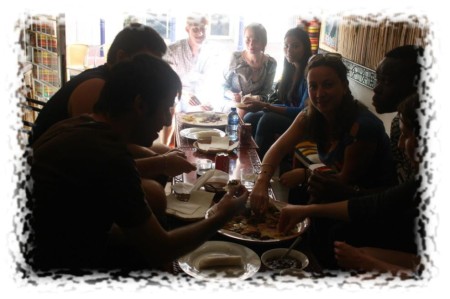 Travel to meet interesting people with different culture and mindset.
Travel to meet interesting people with different culture and mindset.
Last but not least, travelling is the most certain way to meet people from foreign countries, from different cultures and with various worldviews. And these meetings can be the foundations of the great and long-lasting friendship that will give you even more travelling opportunities.
During the conference in South Africa I managed to meet many interesting people, both from the African continent and other parts of the World. With some of them we went around the country afterwards and visited Cape Town and Table Mountain, Mossel Bay, Grahamstown and other interesting places. As you can judge by the photos of this blog post, that was a spectacular journey.
By the way, the trip to this country was made possible mostly thanks to Brigitte, whom I met at a conference in Germany a year before and who invited me to the one in South Africa. I am very grateful to her for that, as well as to all friends, who made that trip an amazing and memorable one.
 So, I advise you to travel, my friend. And I ask you to do it in a sustainable and environmentally friendly way. Try not to use greenhouse gas (GHG) emitting means of transport; restrain your consumption of meat; generate as few waste as possible, especially the hazardous one (batteries, chemicals, etc.); do not cause harm to indigenous flora and fauna, particularly to the rare and unique species; and so on.
So, I advise you to travel, my friend. And I ask you to do it in a sustainable and environmentally friendly way. Try not to use greenhouse gas (GHG) emitting means of transport; restrain your consumption of meat; generate as few waste as possible, especially the hazardous one (batteries, chemicals, etc.); do not cause harm to indigenous flora and fauna, particularly to the rare and unique species; and so on.
In August – November 2012 I was a very “bad boy”: I took flights to Russia, the United Arab Emirates, Indonesia, Denmark, Germany and South Africa, in this way contributing to a lot of GHG emissions.
 Some of it I managed to offset through my contribution to climate change mitigation in the Ungaran region in Indonesia (you can read about it in “INDONESIAN VILLAGES AND CLIMATE CHANGE”). And nowadays I do more research and campaigning aimed at protecting the environment to compensate for my environmental footprint during the travelling.
Some of it I managed to offset through my contribution to climate change mitigation in the Ungaran region in Indonesia (you can read about it in “INDONESIAN VILLAGES AND CLIMATE CHANGE”). And nowadays I do more research and campaigning aimed at protecting the environment to compensate for my environmental footprint during the travelling.
What else is left to say here? I suppose the best conclusion for all this is the well-known quote:






 Posted by Shurik the Creator
Posted by Shurik the Creator 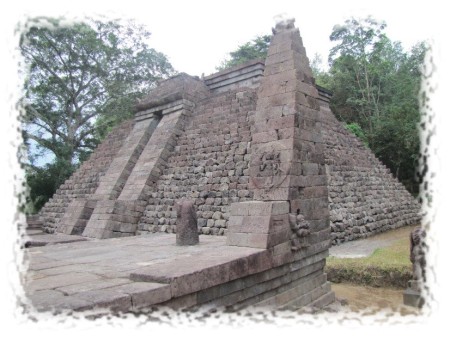
 Indonesia
Indonesia

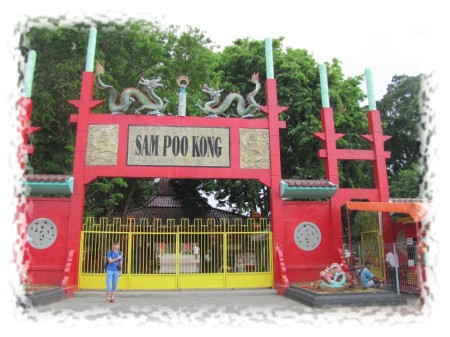

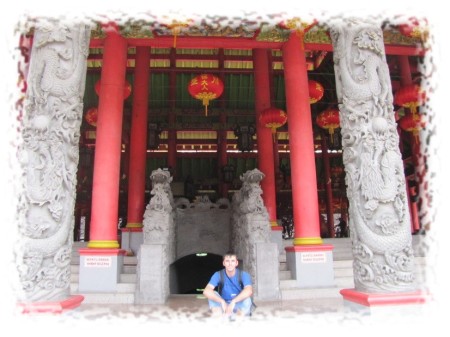 Sam Poo Kong
Sam Poo Kong




